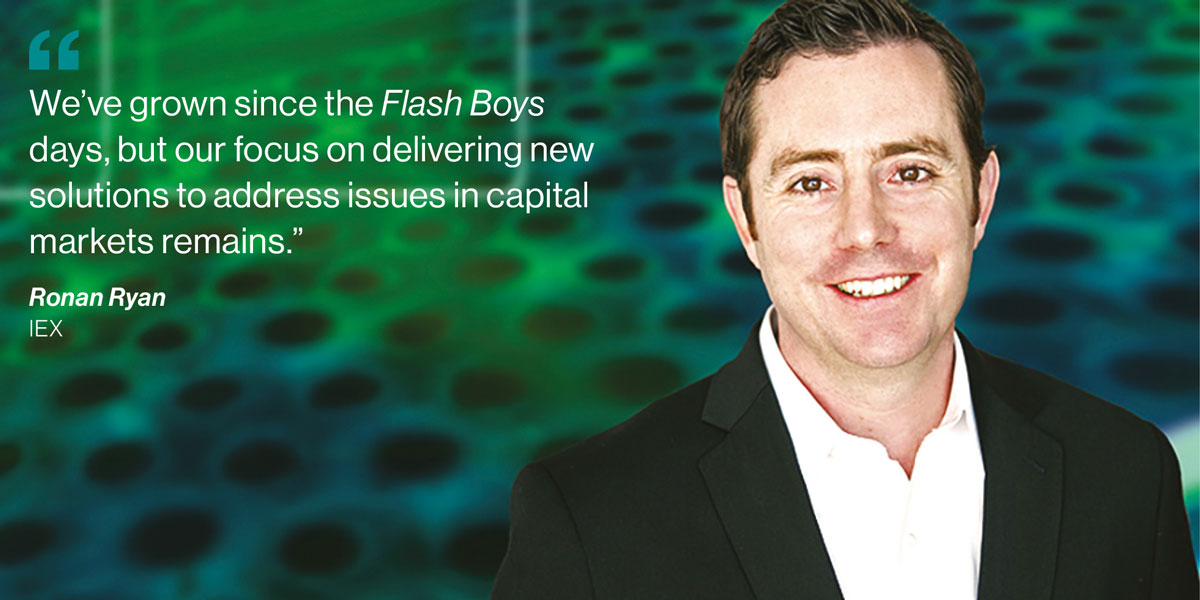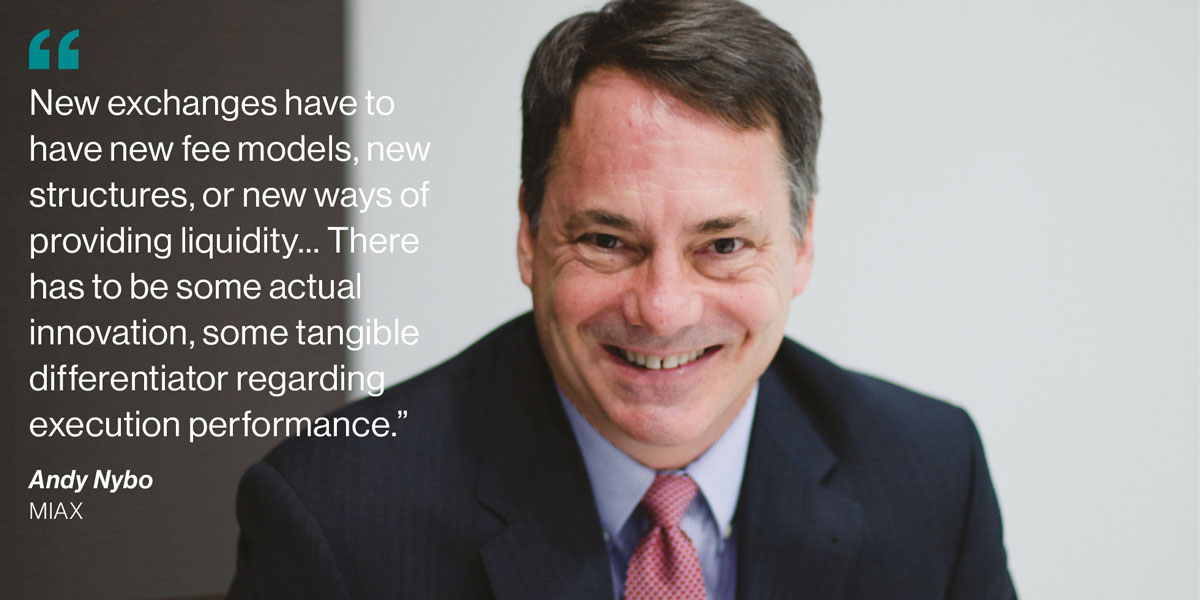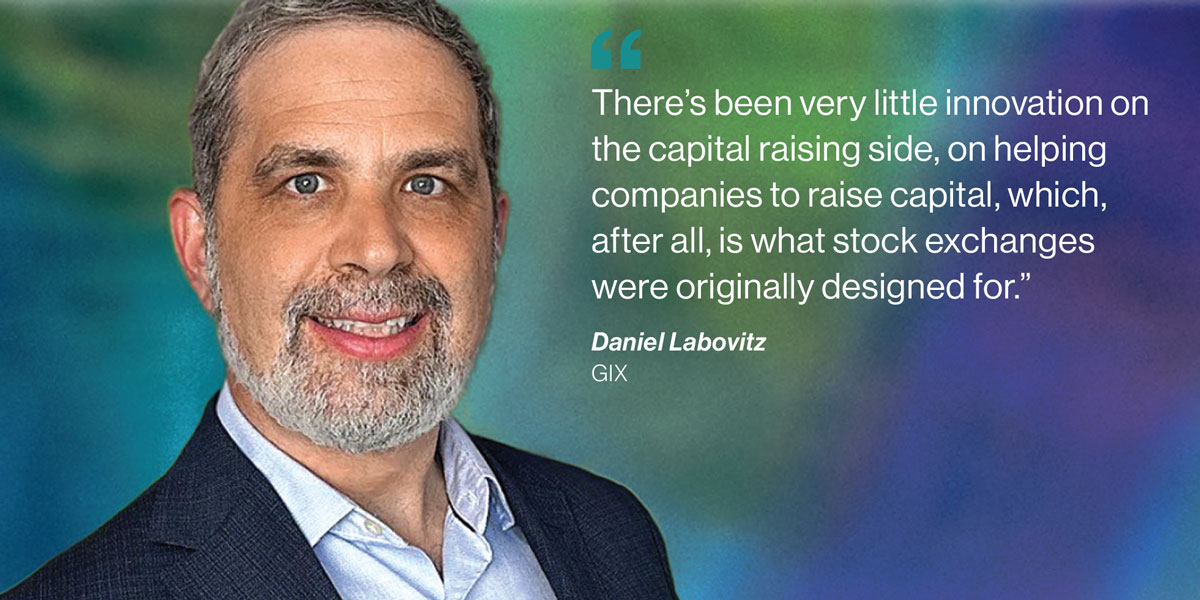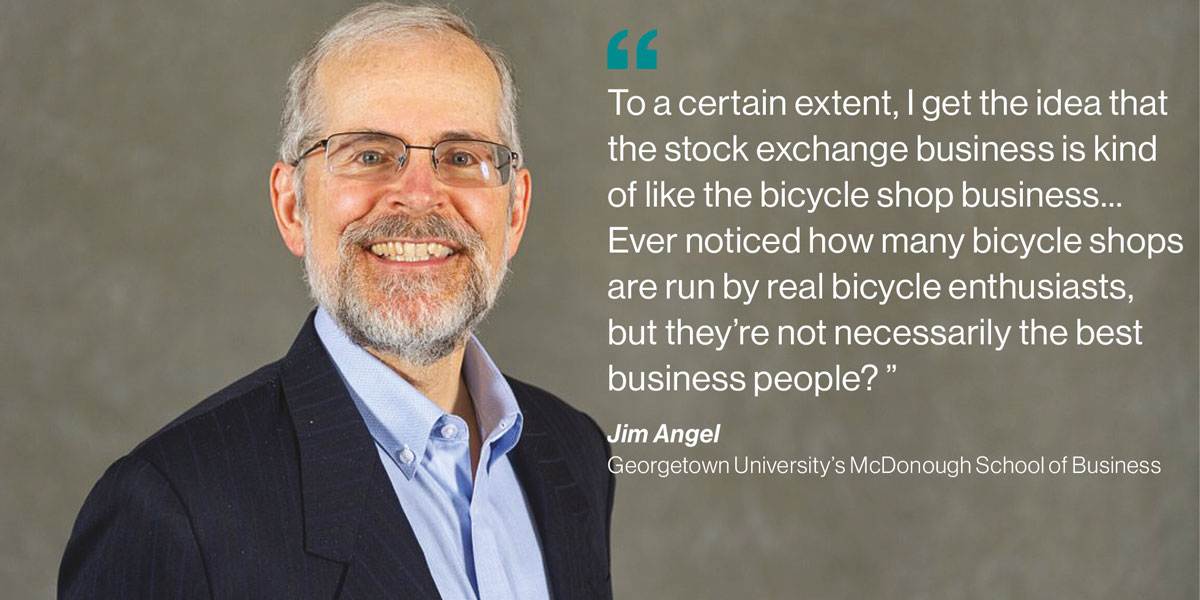 New exchanges are popping up left, right and centre in the US, each angled to appeal to a particular tranche of the industry or certain that its offering will revolutionise markets. Although the idea of introducing new exchanges might sounds like a bad idea from a European perspective, where fragmentation is a major concern, Lucy Carter asks whether the States will see more of a benefit from the challengers.
New exchanges are popping up left, right and centre in the US, each angled to appeal to a particular tranche of the industry or certain that its offering will revolutionise markets. Although the idea of introducing new exchanges might sounds like a bad idea from a European perspective, where fragmentation is a major concern, Lucy Carter asks whether the States will see more of a benefit from the challengers.
In early June, it was announced that a new stock exchange was on the horizon. Just as Texas has long harboured dreams of secession from the US, the Lone Star State was preparing to break away from NYSE and NASDAQ and offer a rival exchange, one with an ‘anti-woke’ mentality and a rebellious spirit. Backed by BlackRock and Citadel Securities, the Texas Stock Exchange quickly made headlines – but some are dubious about what it will bring to the table, and are questioning whether it will stand out amid the proliferation of new exchanges launched over recent years.
“I don’t think [TXSE] has articulated a business case for the benefits to the trading community,” says Jesse Forster, senior analyst for market structure and technology at Coalition Greenwich. “We’ve had a few other exchanges launch over the past few years, and it’s not like they’ve been widely embraced – at least from the perspective of capturing order flow.”
For some, the last challenger exchange to truly change the game was IEX in 2016. With an origin story immortalised in Michael Lewis’ Flash Boys and credited with being the first to offer real competition to NYSE and Nasdaq, Brad Katsuyama and Ronan Ryan’s exchange indisputably altered the landscape. With the goal of creating a level playing field, IEX’s speed bump and crumbling quote indication (CQI or ‘The Signal’) were a welcome solution for an industry tired of the predatory behaviour that bigger exchanges were enabling.

Speaking to Global Trading, chief operating officer Ronan Ryan reflected on the exchange’s impact – and future. “For a decade now, IEX has protected investors through transparency and innovation. We’ve grown since the Flash Boys days, but our focus on delivering new solutions to address issues in capital markets remains,” he said. “Just one example is our newest order type, D-Limit, which works like a standard limit order but is the only exchange order type of its kind designed to protect orders from adverse selection.”
Building and launching an exchange is a complex project, and requires new exchanges to go through a “rigorous approval process” with the SEC, says MIAX’s chief communications officer Andy Nybo. Even once the exchange is up and running, there are complex guidelines to be followed and every alteration to the platform, no matter how small, must first be run by regulators.
A daunting process, without a doubt; but it has not stopped would-be competitors from entering the ring. Ever since IEX came onto the scene, there has been no shortage of new (at least in comparison to the 200-year NYSE) exchanges popping up.
The demand is there; “It’s a very attractive marketplace for exchanges who can build new functionality and capabilities to attract customers and order flow,” says Nybo, noting a huge amount of interest in access to US equities both domestically and internationally.

In the US, an open market structure allows people to adopt a ‘plug and play’ approach when it comes to developing new trading platforms, explains Jim Angel, associate professor at Georgetown University’s McDonough School of Business. “If people use it, that’s great. If people don’t, you’ve just wasted your money.” Different groups want different things from platforms, so there’s never going to be a solution that suits everyone. A problem without an answer, it provides fertile ground for those wanting to be the next big thing. But does it also add to fragmentation?
“To a certain extent, I get the idea that the stock exchange business is kind of like the bicycle shop business,” Angel analogises. “Ever noticed how many bicycle shops are run by real bicycle enthusiasts, but they’re not necessarily the best business people? They just get the idea that, ‘this is a fun thing and I like playing with bicycles, so I’m going to open up a shop’.”
Either way, sincere enthusiasm and a belief that things can change seem fundamental to a new exchange’s launch. Equally as important is the idea of meeting perceived or actual demand, thinks Nybo. “It’s about building functionality that meets the needs of certain customers and constituencies in the marketplace.”
Standing out or slotting in?
There’s a balance to be struck when finding a niche, however. By pegging themselves to very current issues, new exchanges risk being a flash in the pan rather than a serious contender. TXSE, touting an apolitical approach, is inevitably political with its rejection of social policies such as board member diversity. On the other side of the spectrum, The Green Impact Exchange’s (GIX) focus on environmental credentials has emerged at a time when ESG is more politically contentious than ever in the US – and is a movement that has “basically petered out” among equity traders in the US, according to Forster.

When starting out, GIX co-founders Daniel Labovitz, CEO, and Charles Dolan, chief operating officer, knew that competing with the big exchanges was, in Dolan’s words, “a fool’s errand”. Labovitz explains: “From working at the NYSE for so many years, we understand the network effect of an NYSE listing. It’s not just where your stock is listed; the NYSE has a whole history and aura around it that companies like. However, there’s been very little innovation on the capital raising side, on helping companies to raise capital, which, after all, is what stock exchanges were originally designed for.”
Instead, GIX opted for interoperability. Only firms able to prove that they are acting on their green promises are able to list on the exchange, giving credibility to their sustainability claims and building trust for investors. With their primary listing still on the major exchange of a company’s choice, “Green Impact Exchange is playing to where we have strength rather than trying to displace [incumbents],” Labovitz says.
Technology
To truly stand out, “new exchanges have to have new fee models, new structures, or new ways of providing liquidity,” Nybo says. It’s not enough to launch a new exchange and say, ‘we’re gonna be faster’, or ‘we’re gonna have better technology’,” Forster agrees. “There has to be some actual innovation, some tangible differentiator regarding execution performance.”
Forster is, on the whole, sceptical about the benefits of new exchanges. “Maybe there’s a selling point for the listing community, but [a new exchange] can also negatively impact traders,” he argues, raising costs by introducing a new market data feed into the arena and creating an opportunity cost as traders check additional venues for order flow. His concerns reflect what has been going on in Europe for years, with fragmentation wreaking havoc on liquidity availability.
Rumours of a new exchange initiative between Euronext and Deutsche Börse were swiftly quashed late last year, with critics pointing out that such a project could just enhance the already excessive number of exchanges active on the continent. In contrast to the US, Europe has been making a concerted effort to reduce the number of stock exchanges active on its shores, with consolidation bringing clusters of exchanges under a single banner; SIX Group acquired the Spanish exchange BME back in 2019, and Euronext, initially a merger of the Paris, Amsterdam and Brussels national exchanges, now operates several exchanges across the region.
“I’ve long been in favour of competition within the order flow,” says Robert Schwartz, distinguished professor at Baruch College’s Zicklin School of Business. “Competition is good. We all know that. But having more exchanges can fragment the order flow. If you expand the number of exchanges, you have more inter-exchange competition, but less competition between the orders for the stocks.” New exchanges can add value, however, if they do something different and bring something new to the table, he adds, highlighting GIX and its approach to tackling greenwashing to better cope with climate change as an example.
An alternative approach
There is certainly demand for new and innovative trading venues and models from the institutional trading community, but some argue that this need is being fulfilled by alternative training systems (ATS) like OneChronos and Intelligent Cross rather than exchanges.
“You can think of an ATS as a kind of mini exchange which has ‘regulation lite’,” Angel says, explaining the benefits of the systems. “If you’re running an ATS and you want to change your hours of operation, you just do it. If you’re running a stock exchange, every little rule change has to be approved in advance by the federal government.”

This allows ATSs to more agilely adapt to new ideas than exchanges, something that is of great appeal to both the buy and sell side. As one industry expert recalls: “When I ask about innovative trading venues, creative ways to trade, venues that are really differentiated from each other, it is almost never an exchange that somebody mentions. In the last few years, it has almost been entirely exclusively Pure Stream, OneChronos and Intelligent Cross.”
“The big, incumbent exchange groups, I don’t think that they’re necessarily seen as innovative,” they continue. “That’s not necessarily a bad thing, because maybe what you want in your exchange is reliability and consistency. There’s value in that too.”
It’s not all doom and gloom for challenger exchanges, though. There is space for innovation, and with market demands changing all the time, technology evolving at pace and unending industry demand for new solutions, you never know; maybe the next upstart exchange will be the one to change it all.

 New exchanges are popping up left, right and centre in the US, each angled to appeal to a particular tranche of the industry or certain that its offering will revolutionise markets. Although the idea of introducing new exchanges might sounds like a bad idea from a European perspective, where fragmentation is a major concern, Lucy Carter asks whether the States will see more of a benefit from the challengers.
New exchanges are popping up left, right and centre in the US, each angled to appeal to a particular tranche of the industry or certain that its offering will revolutionise markets. Although the idea of introducing new exchanges might sounds like a bad idea from a European perspective, where fragmentation is a major concern, Lucy Carter asks whether the States will see more of a benefit from the challengers.